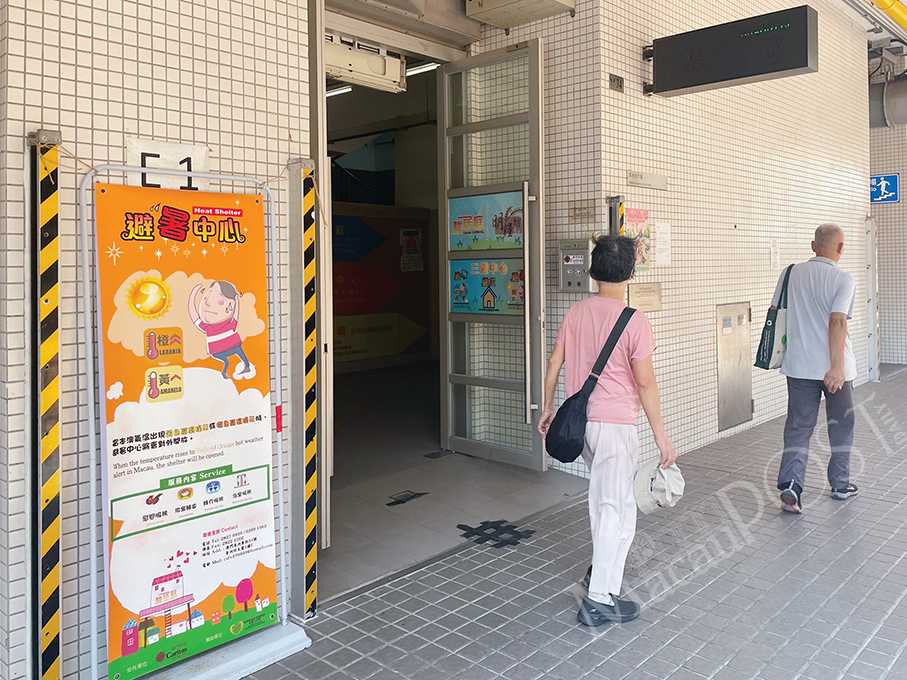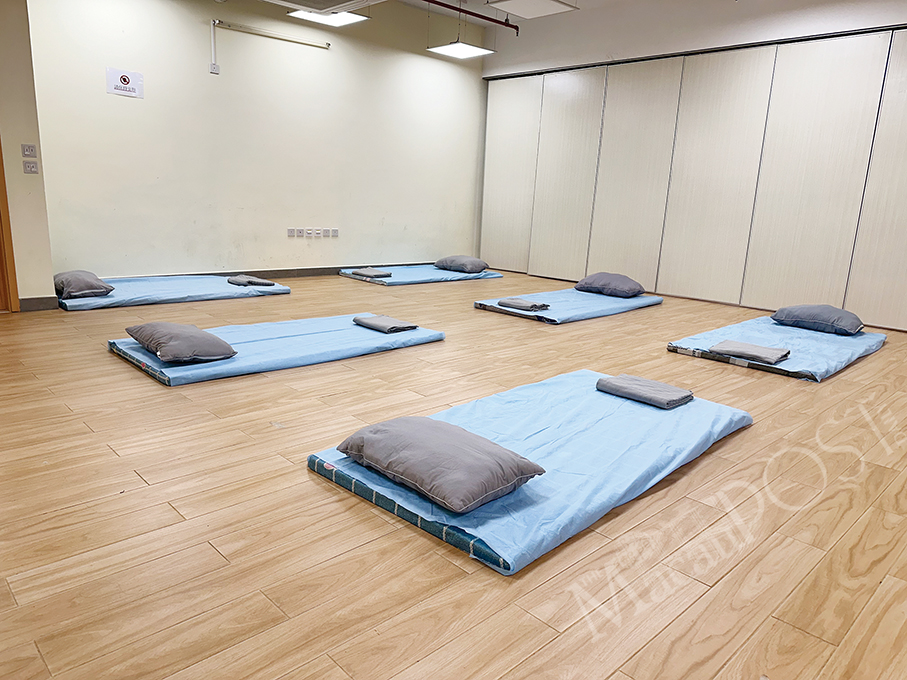The local observatory said that due to the impact of the subsiding air at the outer circulation of Typhoon Gaemi, the weather in Macau was “extremely hot” yesterday, with an Orange alert in force for a while and a top temperature in some areas of more than 36 degrees Celsius, in response to which the city’s cooling shelter in Ilha Verde district on Wednesday extended its opening hours from 6 p.m. to 8 a.m. the following day.
The Macau Meteorological and Geophysical Bureau’s (SMG) Yellow hot weather alert was in effect at about 5 p.m. yesterday, predicting today’s mercury to reach 33 degrees or above.
According to the SMG website, the Orange alert indicates “extremely hot” weather in Macau, while Yellow denotes “very hot”.
The weather bureau’s real-time monitoring data at about 3 p.m. yesterday showed that eight out of the 10 local monitoring stations recorded maximum temperatures above 35 degrees, with the maximum temperature at the Outer Harbour Ferry Terminal station at 36.3 degrees and the Fortress Hill station at 36.2 degrees.
Acknowledging the high temperature alert by the observatory, the Health Bureau (SSM) urged the public in a statement yesterday afternoon to take precautions against the heat and sun by staying hydrated, avoid spending long periods of time outdoors as much as possible, and wearing lightweight, light-coloured clothing, as well as refraining from staying in a car parked outside for a long time, all of which, the bureau stressed, was especially important for at-risk groups such as the elderly, children, and pregnant women.
Avoiding outdoor activities in the heat is the best way to stay safe and healthy during the hot weather, according to the Health Bureau. On June 9, Macau’s temperature began to rise, and the Yellow or Orange hot weather alert has remained in effect since then, when the Social Welfare Bureau (IAS) announced the opening of Caritas Macau’s Casa Corcel on Rua Leste da Ilha Verde as a temporary cooling centre, providing blankets and mattresses to those in need. The centre is air conditioned.
According to Olivia Ip Chi Leng, who is in charge of the centre, during cold spells, the centre opens to the public as a temporary warming shelter, while during hot weather, the centre is used as a cooling shelter.
Although the cooling centre had already been open for 27 consecutive days yesterday since its opening on June 9, Ip admitted that the number of people coming to the centre to “escape the heat” was far below the number of those “escaping the cold”.
Last month, according to the Social Welfare Bureau, the cumulative number of users stood at only four, but the number of people who needed to take refuge from the cold at the centre, which was only open as a warming shelter for 21 days from January to March this year, exceeded 100, most of them local residents, followed by mainlanders.
Ip told the Post during an interview at the centre yesterday: “One of the reasons for the gap between the number of uses of the shelter during hot and cold weather is that there are many social service facilities out there that provide 24-hour air-conditioned places such as restaurants and public libraries where people can escape the heat.”
Ip pointed out that some street sleepers were believed to be deterred by the “remote” location of the shelter. She cited the example of some of the cases, in which she was told that the shelter was “a bit too far away” and that they [street sleepers] refused to go to the shelter in Ilha Verde (at the northern tip of the peninsula) from Zape (at the peninsula’s southern waterfront).
When asked whether the provision of the cooling shelter wasn’t a waste of resources if only very few people use it, Ip said that one of the original objectives of the shelter was to help identify street sleepers: “The shelter attracted them to come to us so that we could know whether they were street sleepers or not, and in turn, some of our street sleepers could come here to use the service…… As Macau is not that small, it takes a little bit of time to find them, so I think the shelter can actually attract them to come here because it’s for overnight stays, and a night that they can sleep properly rather than just sitting down to rest somewhere”.
According to Ip, since the Social Welfare Bureau has commissioned Caritas Macau to manage the shelter, Caritas has identified around three to five street sleepers through the facility. She said: “In fact, when we have a social worker on duty, we will find out why they are in need of the shelter service, and even if we don’t have a social worker, we will also ask them why they need to come here and how they got to know about the service when they register to enter it.”
The shelter provides separate accommodation for men and women, bathrooms, a TV room, hot water showers and simple food and non-alcoholic drinks, during the opening hours of which, people in need can enter the shelter by presenting their valid identity documents and completing a simple registration procedure.

Olivia Ip Chi Leng, who is in charge of Caritas Macau’s Casa Corcel, poses after an interview with the Post yesterday about the centre’s cooling shelter on Rua Leste da Ilha Verde. – Photos: Yuki Lei

Two pedestrians walk past the entrance to the centre yesterday.

This photo taken yesterday shows sleeping pads provided by the temporary cooling shelter.






